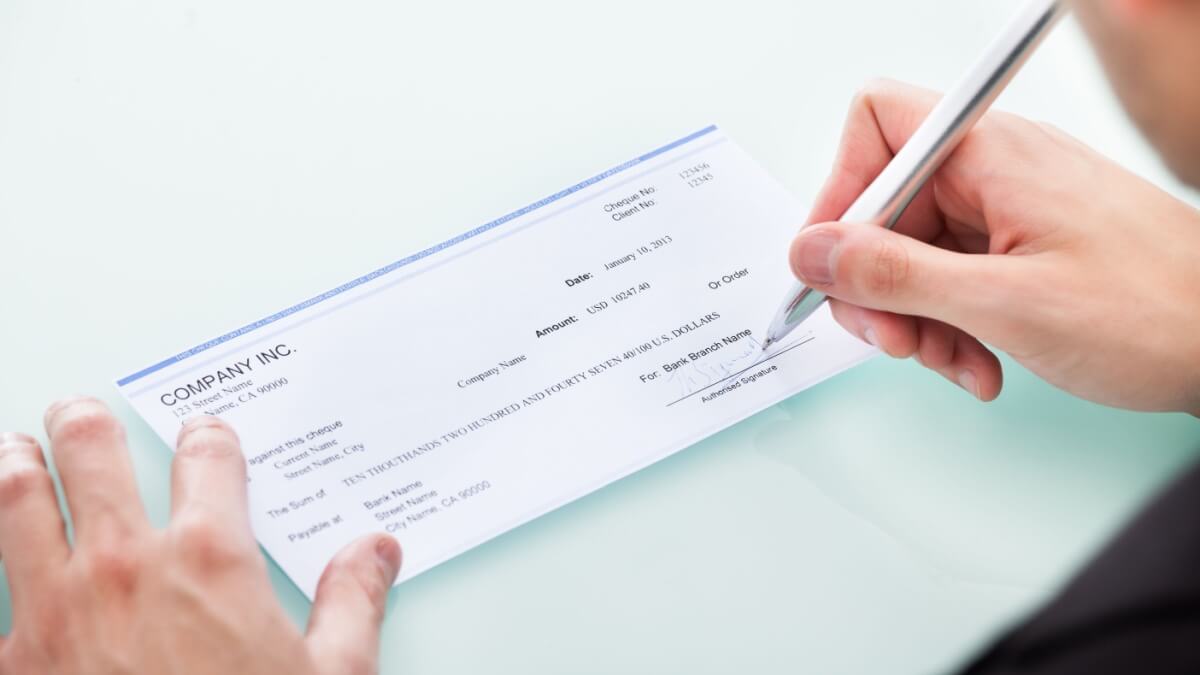Paysera alternatives: Which is the best for you?
Looking for a Paysera alternative? Compare the top 5 options in 2025 and find the best app for international payments, spending, and saving.

A money order or cashier’s check allows you to send funds to recipients in the US or abroad. These payment methods are a safe alternative to cash and personal checks.
But exactly what is a money order? How can you use a cashier’s check for a large payment, such as putting a down payment on a new home?
We take a look at everything you need to know, including the key differences between sending a cashier’s check vs money order – and which payment method is the best choice for you.
Send money to 80+ countries with the mid-market exchange rate and low, transparent fees with Wise. Set up a free Wise account online or in the Wise app on iOS and Android, to transfer money fast in 40+ currencies.
Over 50% of Wise payments arrive instantly* — and all Wise transfers are deposited directly into your recipient's bank account for convenience.
No ongoing fees, no hidden charges and no hassle — just fast, transparent international transfers that can beat the banks.
*Transaction speed claimed depends on funds availability, approval by Wise’s proprietary verification system and systems availability of our partners’ banking system, and may not be available for all transactions.
A money order is a safe way to send money to your recipient. Similar to a check, it’s a common option for people who don’t have a traditional checking account.
You can pay for your money order in cash. When your recipient receives the order, they can deposit it directly into their bank account.
Many US institutions and retailers sell money orders, such as:
- banks or credit unions
- drug stores
- post offices
- gas stations
- big-box stores and other retailers
It’s easy to fill out and send a money order, and you can buy a domestic or international order at many retailers. You’ll simply need to provide your recipient’s details and how much you want to send.
You can only send up to 1000 USD by money order within the US, and international money orders may be limited to 700 USD.¹ You’ll also pay a small fee to issue your order.
The US Postal Service® (USPS) charges 2.10 USD for money orders up to 500 USD and 3 USD for orders from 500 USD to 1000 USD.²
So, what is a cashier’s check? Simply put, it’s a check drawn against your bank’s account rather than your personal checking account.
This means that your bank guarantees you can fund the payment. Unlike a personal check, which can bounce if you don’t have enough money in your account, your recipient is guaranteed to receive the payment.
Also known as an official check, you can use a cashier’s check just like cash – but it’s typically considered safer than carrying large sums of money, especially if you’re making a substantial payment.
You can pick up a cashier’s check from your local bank or credit union, but you may need an account with the institution first. You’ll need to make a deposit into your bank’s account to submit your check. You’ll also need to pay a fee to place your transfer.
The Bank of America® charges a 15 USD fee for cashier’s checks. However, if you enroll in the bank’s Preferred Rewards scheme, you won’t have to pay this charge.³
There are a few similarities between cashier’s checks and money orders. You can use both of these methods as a secure way to send money to your recipient, and they are common alternatives to cash or personal checks.
However, there are some key differences. Let’s take a closer look at the difference between a cashier’s check and a money order.
| Money order | Cashier’s check |
|---|---|
|
|
|
|
|
|
|
|
If you’re deciding whether to send a money order vs cashier’s check, it’s important to think about the size and purpose of your payment.
Cashier’s checks are best for large payments, as your bank can guarantee that your recipient will receive their funds – and when. For example, your bank must make the first 5,525 USD of your payment available within 1 business day.⁵
This keeps your money safe until it reaches your recipient, and some lenders may ask for payment by cashier’s check to ensure a smooth transaction.
You can use a cashier’s check for big purchases like:
- the down payment for a home
- college or school tuition fees
- loan or mortgage payments
- a car or other vehicle
Cashier’s checks are a secure payment method for transferring large sums, making them a convenient alternative to cash.
Alternatively, money orders are typically used for everyday expenses like:
- rent
- bills
- small debts to friends and family
Your money order limit is 1000 USD, and you can pick one up from a range of convenient retailers, as well as your local bank or credit union.
Money orders are also cheaper to send than cashier’s checks and you don’t need a checking account to buy your order. This makes money orders a more accessible transfer method for everyday payments.
Although a money order is an easy and secure way to pay someone, this payment method has a few disadvantages.
Your recipient may not receive your funds immediately, and if they cash a money order at a different bank to the issuer, they may experience additional fees or payment delays.
A money order can also be difficult to track, so you may not know exactly when your recipient cashes it.
Money orders cost around 3 USD to 5 USD, but this can differ depending on the issuer. USPS charges up to 3 USD per money order, but it’ll cost 5 USD to buy your money order from a bank like Chase®.⁶
Cashier’s checks are convenient for guaranteeing large payments in the US and overseas. However, there are some disadvantages to this payment method.
You’ll need a bank account to buy a cashier’s check. You’ll also need to confirm that your recipient accepts this type of transfer. A cashier’s check may also be more expensive than other payment methods.
Look out for common cashier’s check scams before sending or depositing your check. You can avoid fraudulent activity by confirming that your cashier’s check was issued by a legitimate bank.
A smart option if you’re sending money overseas: meet Wise.
Register a Wise account online or in the Wise app on iOS and Android, and send money to 70+ countries, with the mid-market exchange rate and low, transparent fees.
Wise always shows you the amount you’re paying and how much your recipient will get — and you can even compare against other providers on the Wise app or desktop site. If another service is cheaper for your particular payment, you’ll be shown — so you can’t lose.
| See how Wise compares with international bank transfers in our full guide |
|---|
Please see Terms of Use for your region or visit Wise Fees & Pricing for the most up to date pricing and fee information
Money orders are considered very safe, as your personal details don’t appear on the order. This means it’s hard for someone to steal your information, such as your bank account number or routing number.
However, a cashier’s check may be more secure than a money order, as the money is drawn against your bank’s account, rather than your personal or business checking account.
Money orders are typically cheaper than cashier’s checks. For example, a money order from US Bank® costs 5 USD, whereas a cashier’s check costs 10 USD.⁷
Your money order fee can depend on whether you buy it from a post office, bank, or retailer. If you want to send an international money order with USPS, you’ll pay 49.65 USD in issuing fees, plus a processing fee.¹
You may also need to pay additional costs for your money order or cashier’s check, so make sure to confirm any charges before you send your payment.
A money order or cashier’s check can help keep your funds safe until they reach your recipient.
Money orders are best for everyday payments, whereas you can use a cashier’s check to guarantee large funds for expenses like a car or house deposit.
However, it’s important to think about how much it’ll cost to send your payment, as many banks charge a fee to buy your domestic or international cash order.
Choose a money transfer platform like Wise for a simple digital solution. Send your money around the globe with just the touch of a button.
Sources:
Sources checked on 07.08.2024
*Please see terms of use and product availability for your region or visit Wise fees and pricing for the most up to date pricing and fee information.
This publication is provided for general information purposes and does not constitute legal, tax or other professional advice from Wise Payments Limited or its subsidiaries and its affiliates, and it is not intended as a substitute for obtaining advice from a financial advisor or any other professional.
We make no representations, warranties or guarantees, whether expressed or implied, that the content in the publication is accurate, complete or up to date.

Looking for a Paysera alternative? Compare the top 5 options in 2025 and find the best app for international payments, spending, and saving.

Looking for a Sendwave alternative? Compare the top 5 options in 2025 and find the best app for international payments, spending, and saving.

Looking for a SoFi alternative? Compare the top 5 options in 2025 and find the best app for international payments, spending, and saving.

Your full guide to MTN MoMo transfers.

Your full guide to M-Pesa international transfers.

Everything you need to know about sending money abroad with Orange.